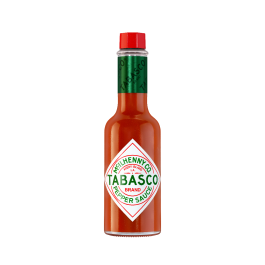-
What is Pungency?
Pungency
Pungency refers to the taste of food commonly referred to as spiciness, hotness or heat, found in foods such as chili peppers. Highly pungent tastes may be experienced as unpleasant. The term piquancy is sometimes applied to foods with a lower degree of pungency that are “agreeably stimulating to the palate”.
In colloquial speech, the term “pungency” can refer to any strong, sharp smell or flavor. However, in scientific speech, it refers specifically to the “hot” or “spicy” quality of chili peppers. it is the preferred term by scientists as it eliminates the ambiguity arising from use of “hot”, which can also refer to temperature, and “spicy”, which can also refer to spices.
-
How Does It Work?
Mechanism
Pungency is sensed via chemesthesis, the sensitivity of the skin and mucous membranes to chemical substances. Substances such as piperine, capsaicin, and thiosulfinates can cause a burning or tingling sensation by inducing a trigeminal nerve stimulation together with noraml taste reception. The pungent feeling caused by allyl isothiocyanate, capsaicin, piperine, and allicin is caused by activation of the heat thermo- and chemosensitive TRP ion channels. The pungency of chillies may be an adaptive response to microbial pathogens.
Although the “burning” sensation does not correspond to a real stimulus, repeated and prolonged use of hot spices may harm the peripheral heat-sensing neurons; this mechanism may explain why frequent spice users become less sensitive to both spices and heat.
-
How Is It Used?
Scoville Scale
Pungency is often quantified in scales that range from mild to hot. The Scoville scale measures the pungency of chili peppers, as defined by the amount of capsaicin they contain. It is recorded in Scoville heat units (SHU).
Cultural Foods
The pungent sensation provided by chili peppers, black pepper and other spices like ginger and horseradish plays an important role in a diverse range of cuisines across the world.
-
Why Do People Like It?
Thrill-Seeking Theory
The thrill-seeking theory suggests that some people are attracted to spicy taste due to intense sensations or thrills.
Antimicrobial Theory
According to the antimicrobial theory, general spices have been added to foods in hot climates due to antimicrobial properties of related substances.





